Many names, a single incomparable Italian delicacy: Struffoli!
Some like to make them for Carnival but they are also popular for Christmas, or you may want to enjoy them on both holidays and share them with friends on New Year's Eve.
The classic recipe asks to finish them with colored sugar sprinkles, but some like to add candied fruits or delicious ground almonds. Other recipes, like the Sicilian, dictate you should flood them with icing.
Then there is the shape given to the dessert, which varies according to the local tradition and the imagination of those who make it: round, cone, pine cone, ring…
Then the ingredients, while remaining the basic ones substantially similar everywhere, are enriched with additional components handed down in families and often kept secret.
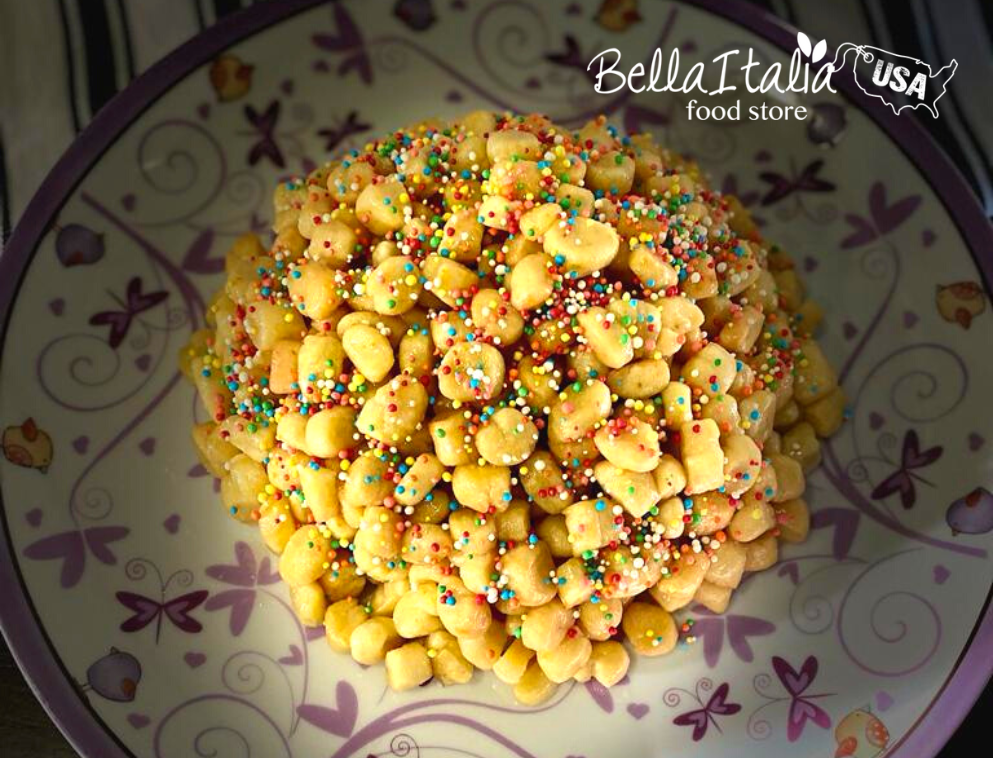
The name Struffoliwas given to this dessert in Naples. A name as old as the city that has always loved this dessert, and that perhaps comes from its Greek origins: the name “Struffoli” is similar to the word “Stroggulos”, meaning something rounded like the small balls that make up this delicacy.
“Cicerata”, on the other hand, is the name given by Lucanians and Calabrians, from “Cicer”, the Latin name of the chickpea, from which perhaps the name “Giggeri” used in Sardinia also derives. “Pignolata” is the name used by Calabrians and Sicilians who prefer to shape the little balls like pine cones. The Apulians of Salento call them “Purcedduzzi” - sweet 'little pigs' - and prepare them at Christmas but eat them until January 17th, when the Carnival begins with the celebration of S. Antonio Abate, the Saint often portrayed with a piglet. In other parts of Italy, they are called “Corona di S. Rita”, due to their shape resembling that of small rosary beads but also and above all because honey is one of the symbols of the Saint. According to legend, as a newborn in the cradle she was surrounded by a swarm of bees who, instead of stinging her, deposited honey on her small lips so that, when she grew up, she would pronounce sweet words of peace and consolation for those suffering.
In my little village of Cercemaggiore, like in many other places in central Italy, we call them Cicerchiata, because the small balls are reminiscent of the “cicerchie”, the very ancient legumes of our ancestors, and we traditionally make them during Carnival!
Struffoli have a different name for every region of Italy. Still, everywhere, in front of this delight, struffolo after struffolo, cicerchia after cicerchia, giggero after giggero, we can all share friendships and the sweetness of life!
This is the recipe I learned in Cercemaggiore:
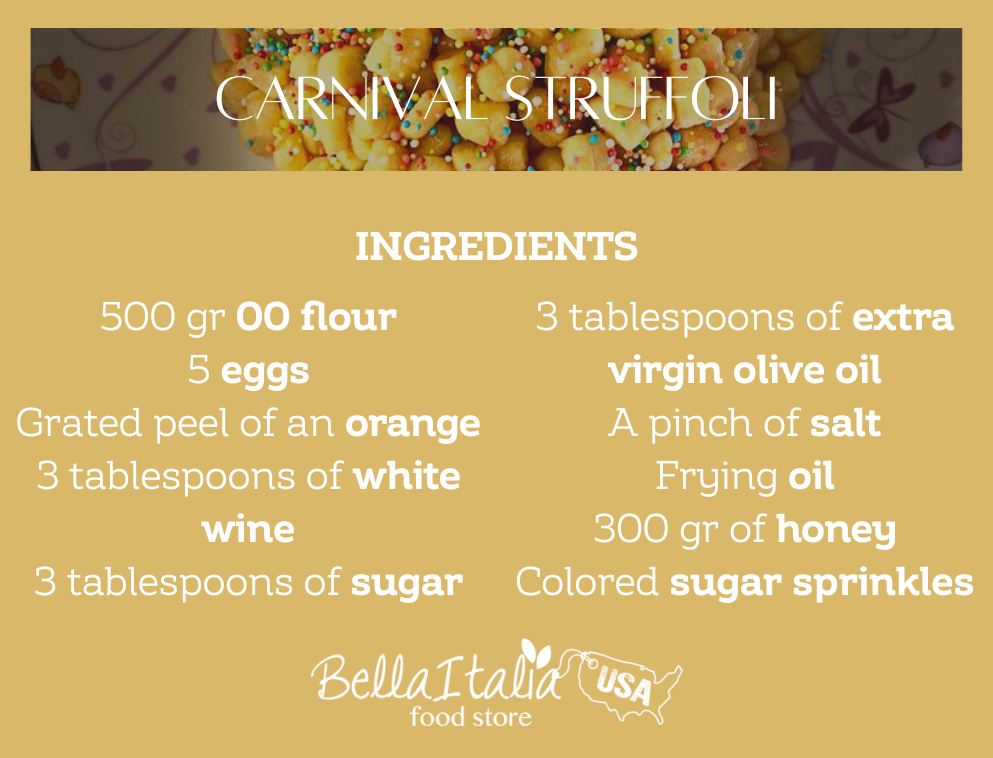
Let’s get cooking!
Create a little volcano with the flour and pour in the eggs - three whole and two yolks. Add also the orange peel, the salt, the sugar, the extra virgin olive oil, and the wine. Mix and roll out the dough with your hands until it is smooth and soft. Let it rest for a while, then roll it out in small sections to obtain long rounded stripes with a diameter of about 1 cm. Gradually cut the strings down into small chickpeas.
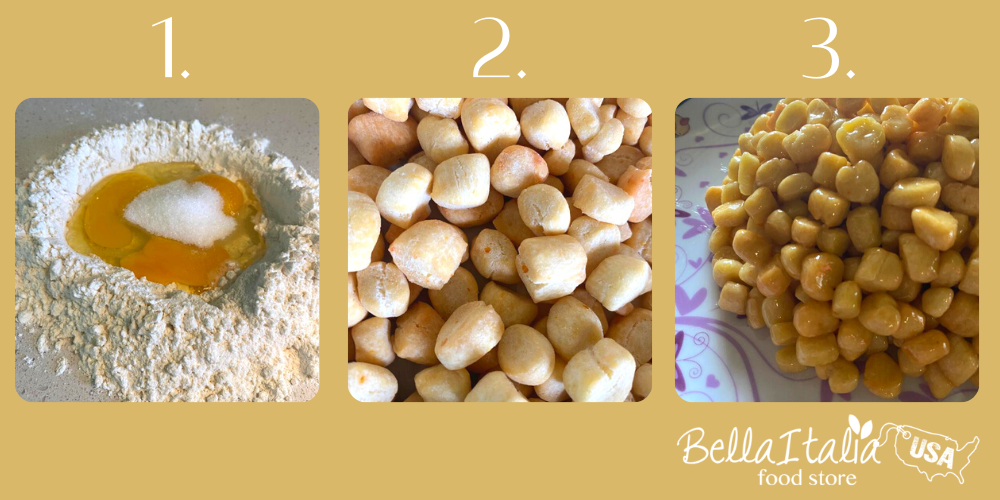
Heat the oil in a deep frying pan and fry the dough chickpeas a few at a time, until they are slightly browned. Leave them to cool on absorbent paper. Melt the honey in a large frying pan and when it is hot, pour in the chickpeas and turn off the heat. Mix well so that all the honey is absorbed; finally arrange them while they are still warm on a tray to give the desired shape with the help of wet hands. If you like, add the colored sprinkles and enjoy!
You will need:

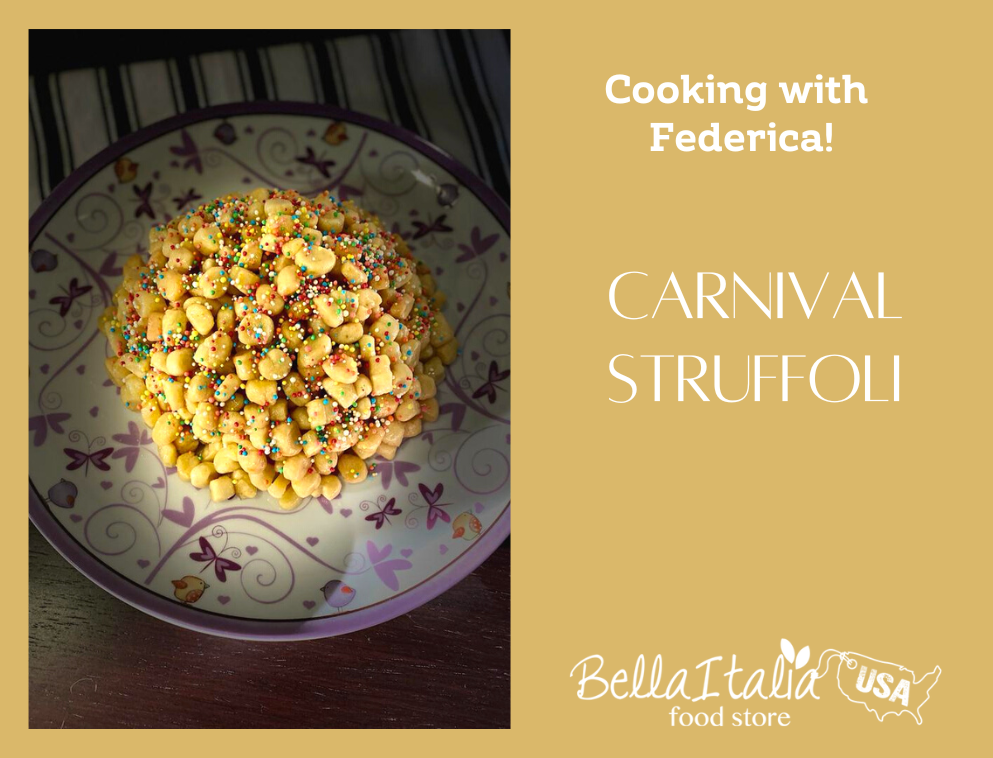


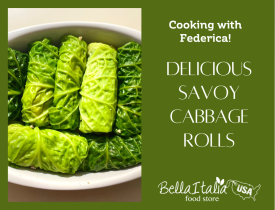



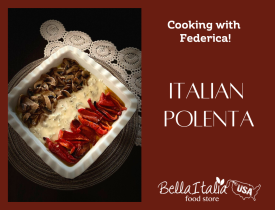
Validate your login